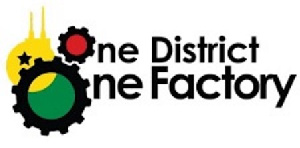One-District, One-Factory (1D1F) Following Ghana’s independence in 1957, the Nkrumah government embarked on an industrialization drive that saw manufacturing’s share of GDP grow from 10% in 1960 to 14% in 1970.
This growth resulted in the establishment of a diverse range of industrial enterprises, the most notable of which are the Volta Aluminum Company (Valco) smelter, sawmills and timber processing plants, and cocoa processing plants.
Breweries, cement plants, oil refineries, textile mills, and car assembly plants are only a few examples. However, many of these companies were only able to survive because of government security. In the state sector, shortages of raw materials and spare parts, as well as inadequate maintenance management practices, led to inflation from 1970 to 1977, then a downturn from 1977 to 1982.
The manufacturing sector never completely recovered after that, and output was poor until the 1990s. Underutilization of industrial capacity, which had been an issue since the 1960s, deteriorated significantly in the 1970s, with average capacity utilization in large and medium-scale factories dropping to just 21% in 1982.
The supply of foreign exchange for imported machinery increased after the Economic Recovery Programme was introduced.
Following the implementation of the Economic Recovery Programme, the availability of foreign exchange for imported machinery and fuel significantly improved, and capacity utilization gradually increased to around 40% in 1989. Despite this, manufacturing production in 1987 was 35% lower than in 1975 and 26% lower than in 1980.
Ghana’s industry accounts for about 25.3 per cent of the country’s overall GDP. Due to government industrialization policies and commitments, Ghana’s industrial output is rising at a 7.8% annual pace, making it one of the fastest-growing in the world.
His Excellency the President of the Republic, H.E Nana Addo Dankwa Akuffo-Addo government reignited the passion to drive industrialization by introducing their flagship industrialization programme called One-District, One-Factory (1D1F).
The mission of the One-District, One-Factory programme is to identify and create business opportunities in the districts, harnessing the strengths and resources of the localities in an efficient technology and demand-driven value chain.
While previous attempts at rural economic revitalization in Ghana had focused mainly on the provision of physical infrastructural facilities, the 1D1F programme focuses on the promotion of commercially viable business development initiatives, to generate sustainable and accelerated economic development in peri-urban and rural communities.
“Those who do not learn from history are doomed to repeat it” – George Santayana.As much as these industrialization programmes are vital in the overall economic […]
